REYKJAVIK

















Fondly known as the Northern Lights city, Reykjavik shines radiantly as a unique domain full of life, beaming with creativity and culture, and enclosed wondrously by incredible natural phenomena
WRITER: ED BUDDS | PROJECT MANAGER: DEANE ANDERTON

Reykjavik might very well be the smallest big city in the world.
Geographically modest, but enormous in spirit, Iceland’s proud capital is also one of the cleanest, greenest, and safest cities in the world.
Host to a subpolar oceanic climate, as the world’s northernmost capital, Reykjavik is characterised by the extreme length of day and night.
From mid-May to mid-July, daylight is essentially permanent as the sun never gets more than five degrees below the horizon, while day length drops to less than five hours between early December and mid-January.
For a city of its size, Reykjavik’s cultural life is stronger than many expect with a diverse selection of museums, galleries, events, concerts, restaurants, and festivals.
A rich historical tapestry, woven from approximately 60 museums, myriad temporary exhibitions, and an array of film, music, and performing arts festivals, along with its recognition as a UNESCO City of Literature, continues to distinguish the city on the international stage.
Elsewhere, Reykjavik’s proximity to the natural world is one of its defining features. Nestled by the Atlantic Ocean and surrounded by mountains, lakes, and lava fields that extend into the city, Reykjavik constantly reminds its inhabitants and visitors of the omnipresence of nature.
As such, the city offers a wide range of activities for those eager to experience mountains, the ocean, the Northern Lights, and other natural phenomena. Whether you seek a relaxing moment in peaceful tranquillity or an adventure-filled day outdoors, Reykjavik provides endless opportunities to connect with its wealth of natural wonders.
For wildlife enthusiasts, whale-watching trips and bird-sighting opportunities are available within Reykjavik’s capital area, complemented by numerous bathing and spa facilities, many of which are designed to immerse visitors in the city’s natural surroundings – the sea, the starry winter sky, or the midnight summer sun.

We speak to Inga Hlín Pálsdóttir, Managing Director of Visit Reykjavik, as she tells us more about the organisation’s exceptional work and how it continues to respond to an everchanging tourism industry.
VISIT REYKJAVIK IS the official tourism organisation of the Icelandic city’s capital area.
It was established in 2023 by six municipalities and the tourism industry who came together to establish a new and improved travel association with the shared goal of fostering better collaboration and the sustainable development of the city.
Today, the destination marketing and management office promotes and develops Reykjavik in a sustainable way, with a focus on increasing economic activity. Through collaboration with partners in the tourism, transportation, and cultural sectors, Visit Reykjavik enhances the visitor experience and showcases all that the city has to offer.
We speak to Managing Director, Inga Hlín Pálsdóttir, about the organisation’s sustainability initiatives, the challenges it faces, and the current state of the tourism industry in Reykjavik.
INGA HLÍN PÁLSDÓTTIR, MANAGING DIRECTOR
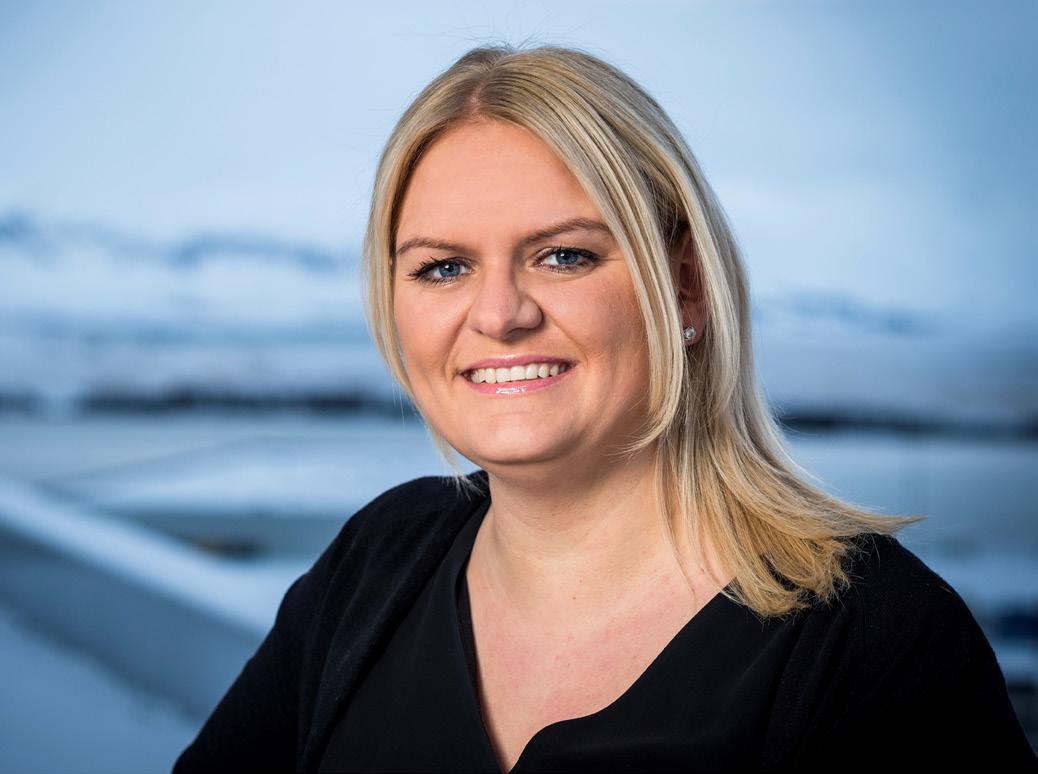
Outlook Travel (OT): Firstly, can you talk us through the origins of Visit Reykjavik and its initial vision?
Inga Hlín Pálsdóttir, Managing Director (IHP): Visit Reykjavik is the official visit organisation of the city, responsible for worldwide marketing. We are the first point of contact for tourism, marketing, information, and events in the Reykjavik capital area.
Furthermore, the creation of Visit Reykjavik is part of the Iceland Tourism Strategy and aligns with the recommendations of the United Nations World Tourism Organisation (UNWTO), which advocates the adoption of destination management as a pathway towards sustainability. The vision of Visit Reykjavik centres around sustainability and fostering good communication among residents, tourists, companies, and other stakeholders in the area. This is seen as the key to future development, enhancing
the attractiveness of destinations within the area and boosting their competitiveness and sustainability.
OT: What are your organisation’s current goals?
IHP: Visit Reykjavik upholds the vision that tourism should coexist in harmony with its natural and social environment. We believe that our focus should not only be on attracting visitors but also fostering collaboration among all stakeholders and implementing responsible and sustainable initiatives and practices. Our destination strategy and goals centre around sustainability with a special focus on introducing and developing new areas within the whole Reykjavik capital area for travellers, encouraging and showing people how to slow down and stay longer in the area, assuring quality of life in the capital area, and being a welcoming and nurturing destination.

OT: How do you market Reykjavik as a destination?
IHP: We promote Reykjavik as an all-year-round destination, offering unique experiences in all seasons. At the heart of our marketing initiatives lies a steadfast commitment to sustainability.
The city of Reykjavik and its adjacent municipalities are all powered and heated with renewable sources. The entire region benefits from geothermal heating, which has been the principal heating method in most Icelandic towns since the 1940s, and all electricity consumed in the Reykjavik capital area is sustainably sourced, generated by both geothermal and hydro power.
The eco-friendly nature of the region’s power supply not only underscores Reykjavik’s dedication to sustainability but also bolsters its appeal as a green and responsible
“By showcasing the various facets of the city, we aim to promote a slower, more exploratory, and sustainable approach to travel”
– Inga Hlín Pálsdóttir, Managing Director, Visit Reykjavik
tourist destination. Any visitor can trust that mundane things such as taking a shower in a hotel room or driving around in a rented electric vehicle (EV) truly are ecologically responsible actions.
The local authorities of the Reykjavik capital area strive actively to create an inclusive atmosphere of acceptance and warmth for visitors and inhabitants alike. In 2024, our annual Reykjavik Pride festival brought the entire nation together for the 25th time to celebrate the freedom of being and living as you
are. An overwhelming majority of the residents of Reykjavik stand firmly behind the notion of inclusiveness and take great pride in values such as gender equality.
Reykjavik also extends a warm welcome to families with children. It provides a secure environment with diverse playgrounds and good recreational opportunities, including family-friendly public pools.
For years, Iceland has been recognised as one of the world’s safest countries by various institutions that analyse crime-related data.

Visitors to Reykjavik can anticipate an inviting and safe destination, making it an ideal choice for family vacations.
OT: Do you have any sustainability or environmental initiatives that you’d like to highlight?
IHP: We are currently developing travel routes for the Reykjavik capital area. The aim of this project is to highlight the diverse experiences and areas of Reykjavik, encouraging visitors to explore beyond the city centre.
Another significant aspect of this project is its emphasis on sustainable travel. We are dedicated to offering comprehensive information on ecofriendly transportation options within the capital area, whether it’s walking, cycling, or using public transit.
By showcasing the various facets of the city, we aim to promote a slower, more exploratory, and sustainable approach to travel. This approach
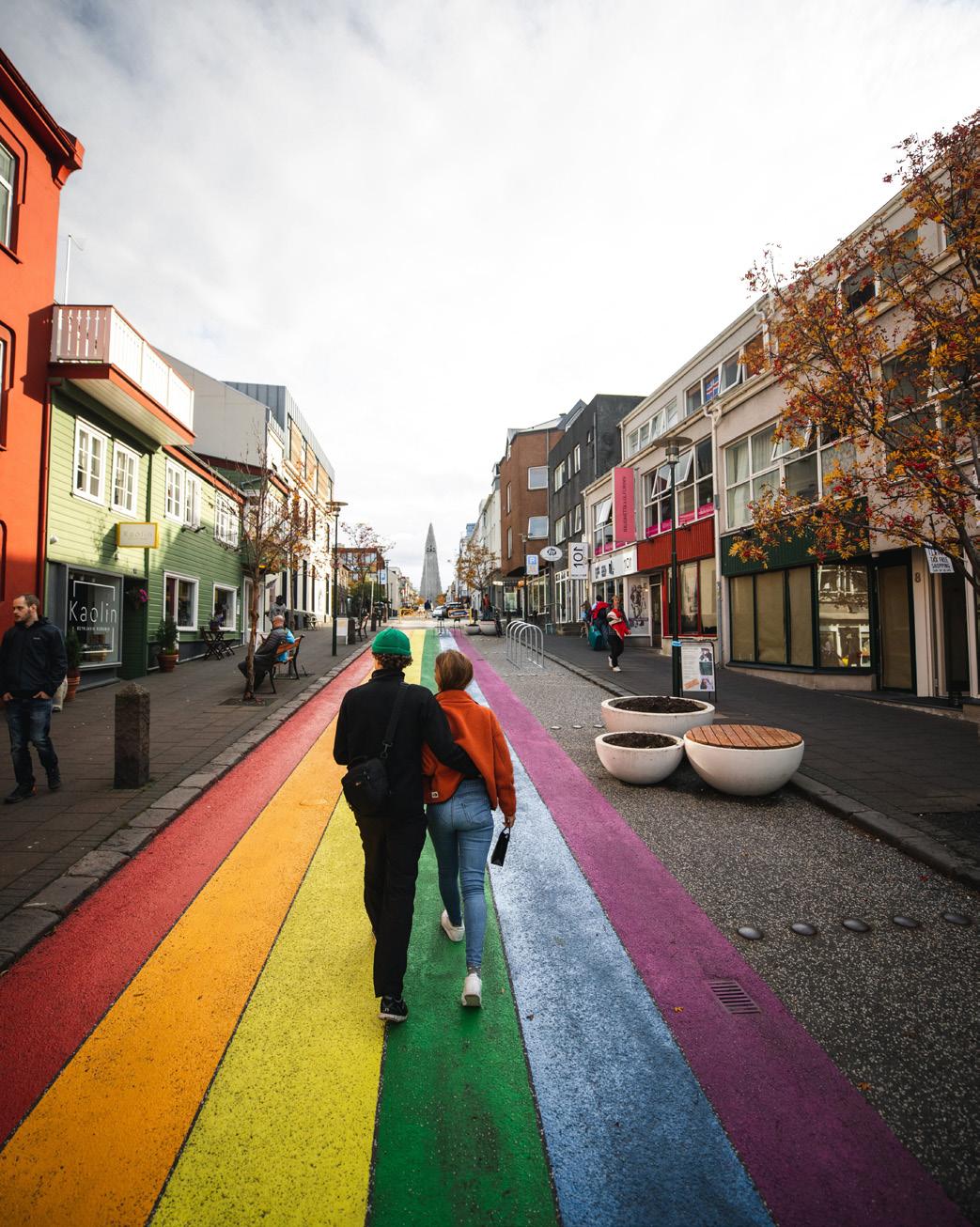
allows visitors to fully appreciate the beauty and charm of Reykjavik and its surroundings, contributing to a more enriching and environmentally conscious travel experience.
Additionally, we have been mapping out recreational areas and hiking trails for both travellers and inhabitants in cooperation with the municipalities in the Reykjavik capital area. The project’s goal is to inspire exploration of the city’s natural wonders – from mountain vistas and rolling hills to the intricate tapestry of lava fields and beaches, as well as diverse avian habitats.
Until now, there has not been a comprehensive and accessible information source dedicated to hiking and outdoor experiences throughout the entire region. Visit Reykjavik is thus enhancing opportunities for both visitors and residents to explore and appreciate the natural beauty in and around the city.
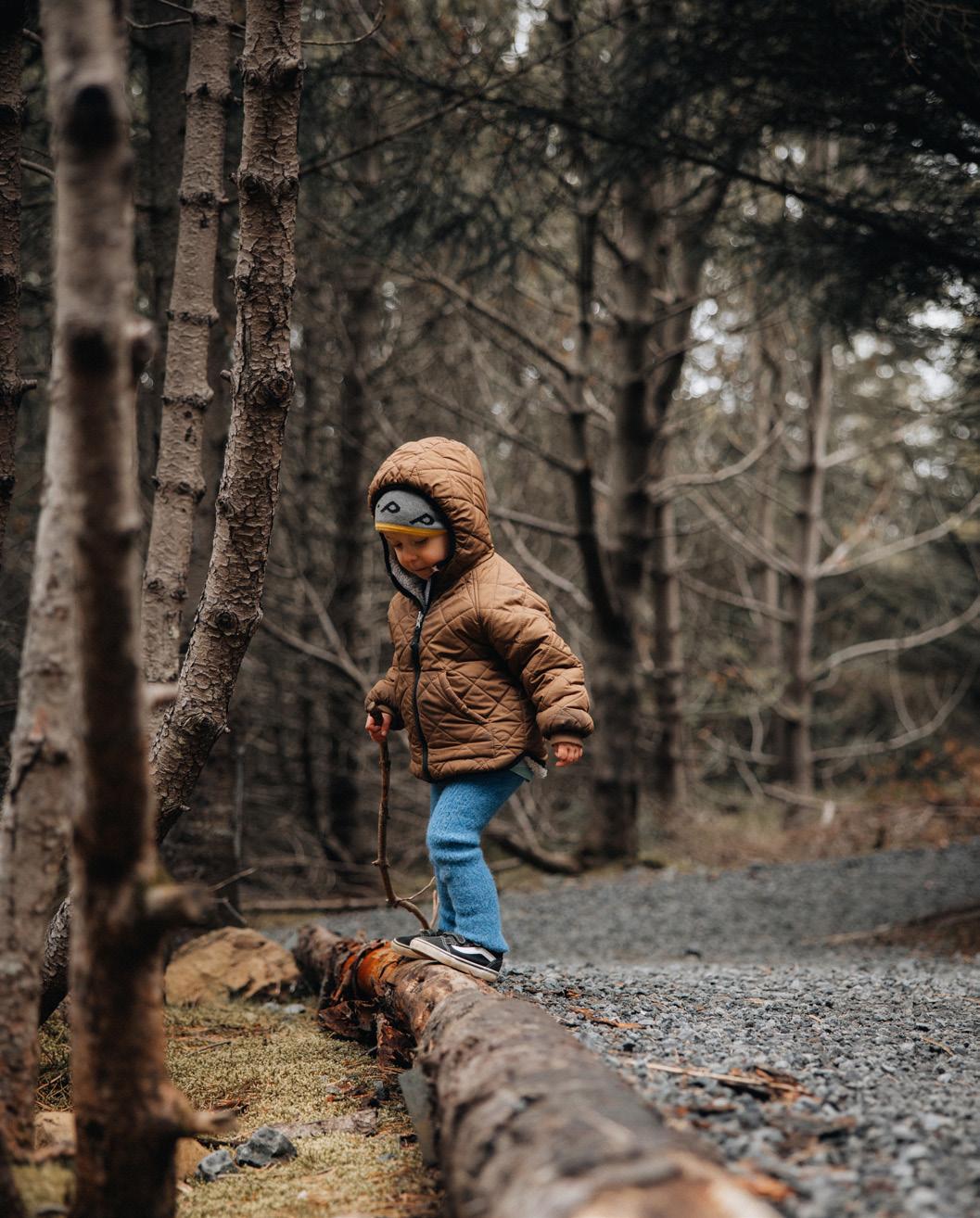
OT: Are there any interesting projects in the pipeline you wish to highlight?
IHP: For some time, Reykjavik lacked a proper museum to showcase one of the main cultural treasures of Iceland – the medieval manuscripts containing the Icelandic Sagas and the Eddas.
These manuscripts are the principal source material for all later adaptations of Norse cultural heritage, such as Marvel’s Thor movies and the Netflix series Vikings.

Icelandic medieval culture and was designed to present and show the public the physical medieval manuscripts. After a long preparation period, the Edda Museum will open in the winter of 2024-25.
OT: What trends are transforming the tourism industry in Reykjavik, and how are you utilising them?
IHP: The global tourism industry is undergoing a digital transformation, and Reykjavik is no exception.
In 2023, a new building named Edda was inaugurated near the Icelandic National Museum and the University of Iceland. This building houses institutions responsible for researching and disseminating operations.
In recent years, Icelandic start-ups have introduced a range of innovative travel solutions, from virtual reality (VR) experiences that allow museum visitors to reenact historical events to infrastructure solutions that assist businesses with their day-to-day
As artificial intelligence (AI) becomes more prevalent, local companies are expected to adopt solutions that enable communication with clients in different languages, provide information, and enhance the overall visitor experience.
Visit Reykjavik aims to increase the digital availability of its products, starting with the Reykjavik City Card, which is transitioning from a physical card to a digital format. While the physical card has been successful for years, it is essential to recognise the growing demand for a seamless digital experience.
Elsewhere, travellers are increasingly seeking ways to have a more positive impact on the destinations they go to. Visit Reykjavik
is committed to helping tourists in the Reykjavik capital area find the most environmentally friendly routes and modes of travel.
Social media plays a crucial role in this initiative, as Visit Reykjavik not only shares the vibrant local scene throughout the seasons but also highlights opportunities for environmentally conscious visitors to make the most of their stay.
OT: What challenges does the tourist industry in Reykjavik face?
IHP: Since 2021, the Reykjanes peninsula region, south of Reykjavik, has been the centre of seismic and volcanic activity.
The fact that this highly seismic active area is located only around 40 kilometres (km) from the city centre can sound alarming to many visitors. The truth is, however, that these developments do not affect the daily life of the inhabitants of the capital.
The seismic activity has resulted in several volcanic eruptions, none of which have posed immediate danger to travellers but have had both a positive as well as a negative impact on the tourist industry.
The first eruptions were in an area which was accessible to the public, thus it became possible to hike to an erupting volcano in the immediate vicinity of the city, which had a positive impact on the demand to visit Reykjavik.
Geologists are thoroughly monitoring the volcanic activity and predict that eruptions will continue for some time. However, these eruptions have had no impact on flight travel and are very unlikely to do so.
Iceland remains a safe destination as these events are centred in a relatively small area. Visit Reykjavík and other tourism organisations in Iceland will continue to inform visitors and the media about developments and find ways to manage the interest of visitors in these fascinating events.

“Overall, it is difficult not to be optimistic about the future of tourism in Reykjavik as new and exciting facilities for visitors are continuously being opened in the area and the cultural life of the city continues to flourish”
– Inga Hlín Pálsdóttir, Managing Director, Visit Reykjavik
OT: Are you optimistic about the future of the tourism industry in Reykjavik?
IHP: Since the beginning of tourism in Iceland, Reykjavik has been the gateway to other destinations around the country.
Around 90 percent of all visitors to Iceland visit Reykjavik during their stay, some for just one night, while others stay longer. The city is the ideal destination in the winter as the capital offers a diverse selection of restaurants, hotels, and cultural events during the season when days are short.
Overall, it is difficult not to be optimistic about the future of tourism in Reykjavik as new and exciting facilities for visitors are continuously being opened in the area and the cultural life of the city continues to flourish.
We hope that Visit Reykjavik will be able to help them discover all the good things that make ours such a great city.
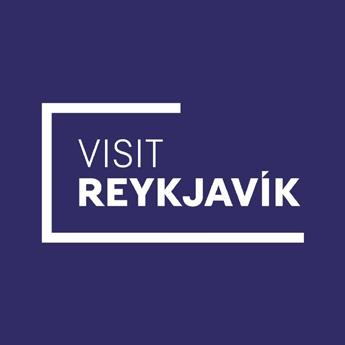
Your Friend In Reykjavik is a family-owned tour company that provides personalised walking tours, transfers, and private driving experiences in Reykjavik, Iceland, and beyond. As it approaches its 10th anniversary, the business remains successful and continues to grow.

With expert knowledge of local folklore and a gift for weaving tantalising tales, each of Your Friend in Reykjavik’s tour guides is passionate about the culture, history, and customs of Iceland – most of them having lived in the country for all their lives.
Offering a plethora of unforgettable day tours of the capital, ranging from food, beer, and seasonal tours at Christmas to the unique Reykjavik CatWalk and a delectable Sweet Tooth tour, guests will certainly not find themselves short of choices.
Providing a personalised experience to remember, the company ensures that its walking tours of the city cater to a range of group sizes.
It also offers private tours for friends, family, and small groups, including a threehour airport transfer and tour combination option, which can be extended for those who want to make the most of their time in Iceland.
Your Friend in Reykjavik’s private driving tours offer complete flexibility for groups to customise their itineraries in any way, whilst travelling in comfort and style with an expert guide – all of which have resulted in thousands of five-star reviews over the years.
Due to the depth of understanding its tour guides have of Reykjavik and surrounding areas, the company enjoys a distinct advantage.

Your Friend in Reykjavik prides itself on the fact that it not only offers insightful, local knowledge through its tours but acts as an essential conduit between Iceland’s many traditions and customs and its visitors.
Seeking to explore an ‘off the beaten track’ experience, guests are introduced to the country’s
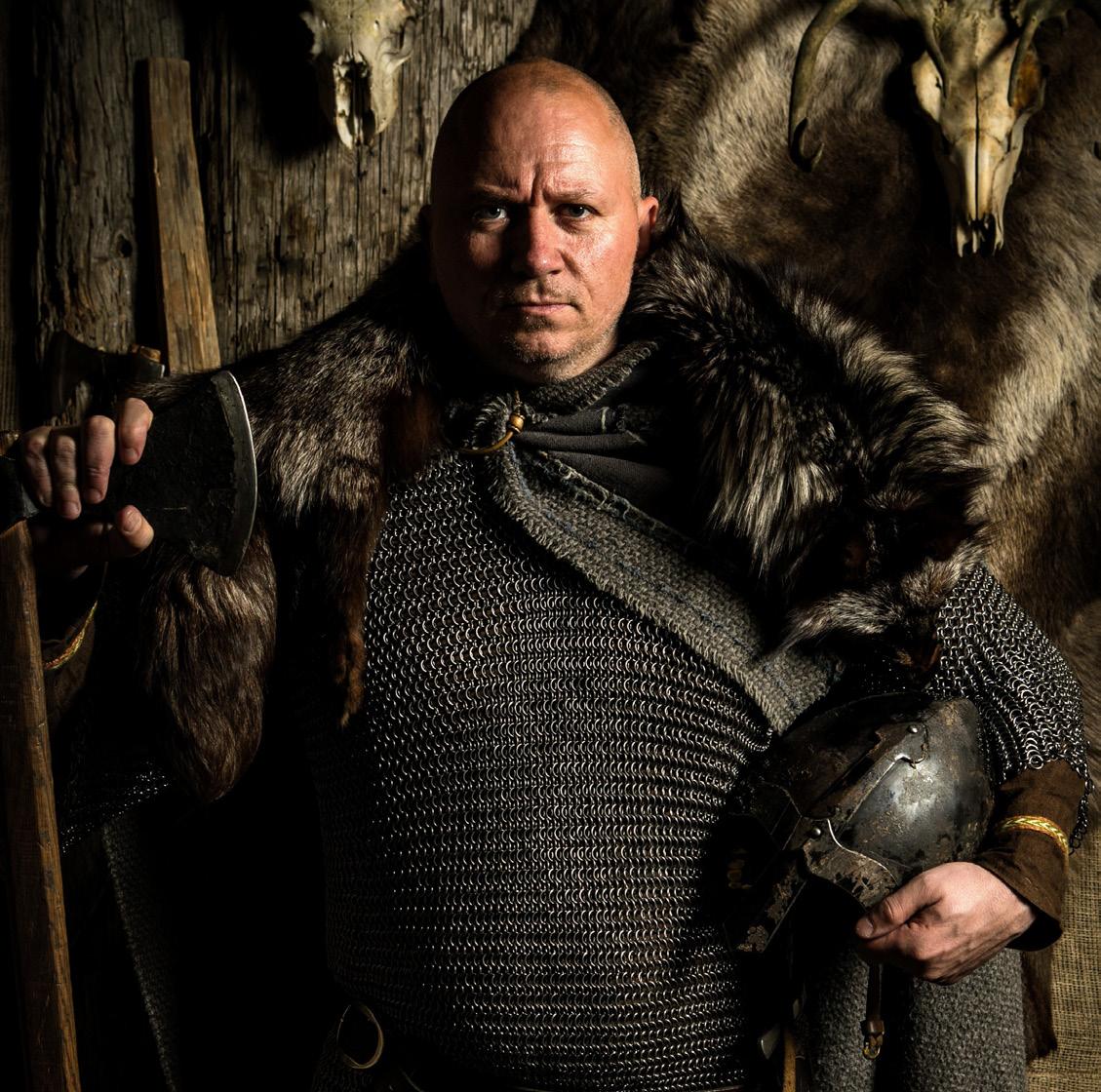
hidden gems and lesser-known treasures by someone who can be considered more than just a tour guide, but a friend.
You can even rent a guide from the company, maybe to join a family or small group for a tour of Reykjavik. It has even provided guides for multi-day tours where required.
Amongst its diverse staff, the company boasts members of various associations including the Icelandic Association of Search and Rescue (ICE-SAR), Fuglavernd – Birdlife Iceland, and the Icelandic Environment Association (Landvernd), the leading nature conservation organisation in Iceland, which only adds to its appeal.
Your Friend in Reykjavik’s professionalism and expertise has been recognised by various awards over the years, having been named amongst TripAdvisor’s Travellers’ Choice Awards Best of the Best for years.
And, in March 2024, the company also achieved an award for its travel product from Scandinavian Outdoor Award (SOA) Travel, the jury recognising how Your Friend in Reykjavik “more than deserves the award.” This is all whilst maintaining its status as an officially licenced


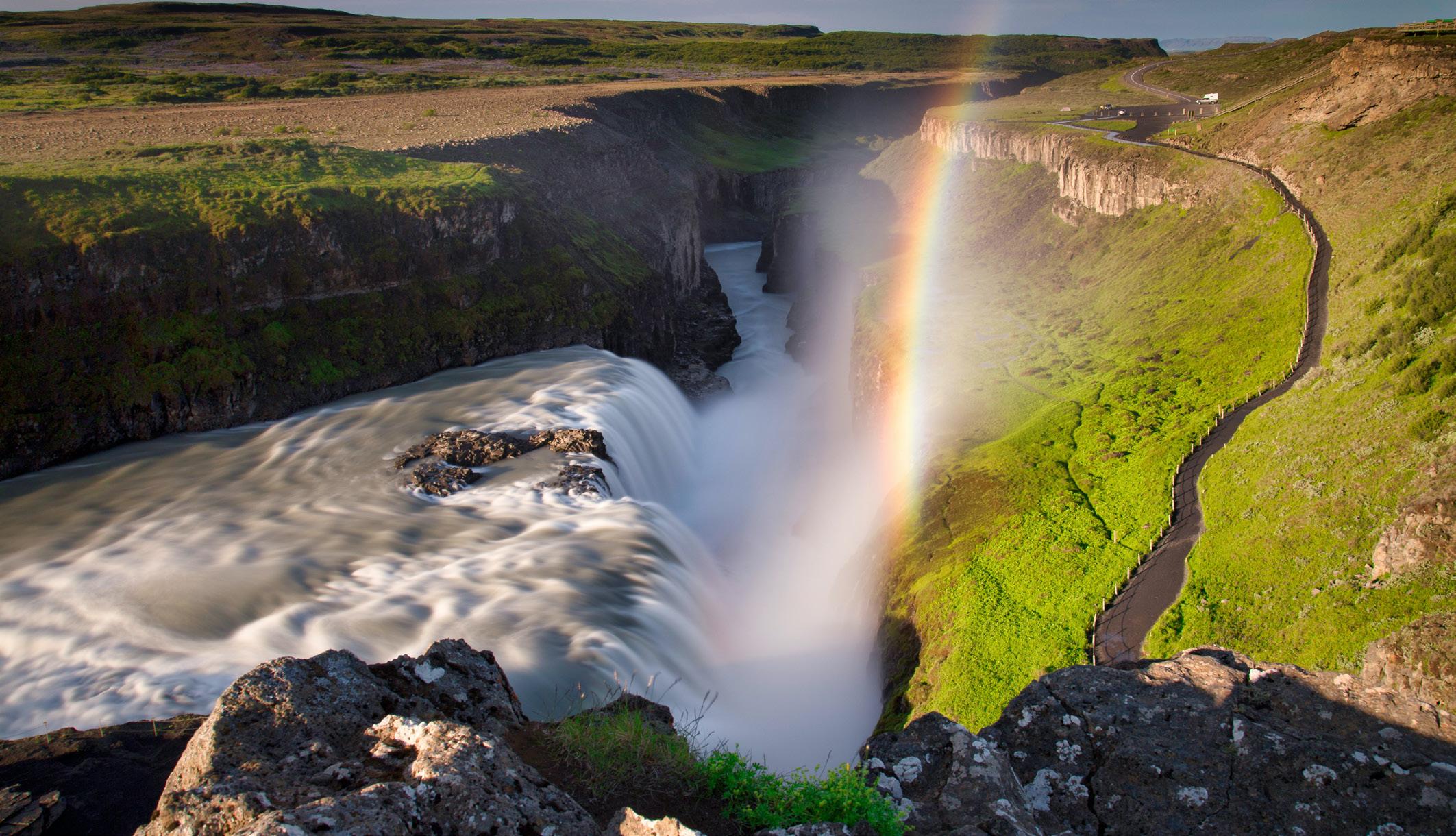
organisation by the high standards of the Icelandic Tourist Board.
As a company with deep respect for its surroundings, Your Friend in Reykjavik is proud to operate in a sustainable and environmentally-friendly way.
In line with stipulations set out by the Icelandic Tourist Board, it has developed plans and risk assessments to ensure the highest possible safety standards.
In addition, it has signed an official declaration of responsible tourism, meaning the company’s environmental responsibility and its positive impact on the local community is more important than ever.
The Slow Food movement is also of interest to Your Friend in Reykjavik, and by supporting local food producers, restaurants, and bars who utilise authentic Icelandic produce, the company highlights the country’s many local delicacies to tourists. It also seeks to provide business opportunities to bolster employment opportunities in the community.
In addition to offering an array of
• 5-star reviews from people all over the world who have loved the experiences.
• No booking, payment, or supplemental fees related to bookings.
• Free cancellation up to 24 hours in advance if customers’ plans change.
walking, private, and corporate tours, along with convenient airport transfer services, Your Friend in Reykjavik is excited to expand its offerings with the introduction of multiday tours. This new addition came to life when the company proudly secured a travel agency license this year, enabling it to provide a comprehensive travel experience, tak ing care of guests from start to finish.

Your Friend in Reykjavik’s multiday tours are thoughtfully crafted to give travellers an immersive and authentic Icelandic experience, blending adventure, culture, and relaxation.
Whether you’re chasing the Northern Lights, exploring the stunning landscapes of the Golden Circle, or uncovering hidden gems in the remote corners of Iceland, its tours are designed to cater to diverse interests and preferences.

With Your Friend in Reykjavik, you can embark on a seamless journey where every detail is handled, allowing you to fully immerse yourself in the beauty and wonder of Iceland. Get in touch with the company today to plan your dream vacation and create a personalised itinerary that turns your Icelandic adventure into an unforgettable experience.
Did we mention that the company can also take care of team building, scavenger hunts, pub quizzes, treasure hunts, and electronic quiz games in Reykjavik?
So, what are you waiting for? Book a Your Friend in Reykjavik tour today. Whether solo, with a small group, or a large party, there is truly something for everyone.



Sundlaugamenning is the term for Reykjavik’s unique swimming pool culture. Approximately 79 percent of adults in Iceland regularly visit public swimming pools, and it is an integral part of the curriculum in Icelandic elementary schools and high schools.

RECENTLY, THE MINISTRY of Culture and Business Affairs, in collaboration with various sports associations and municipalities, including Reykjavik, nominated Icelandic swimming pool culture for UNESCO’s Intangible Cultural Heritage list.
The rationale behind this decision is that the use of geothermally heated public swimming pools in Iceland is one of the main characteristics of society and has significantly contributed to the well-being of the inhabitants.
The tubs in the pool areas, both hot and cold, are used by thousands every day as a place to meet friends and neighbours, gossip, and unwind after a long day.
Many argue that the sense of community in the municipalities in the Reykjavik capital area is largely attributed to the local swimming pools. Icelandic bathing culture is a direct result of the use of geothermal springs found throughout the country, which are linked to the island’s volcanic activity.
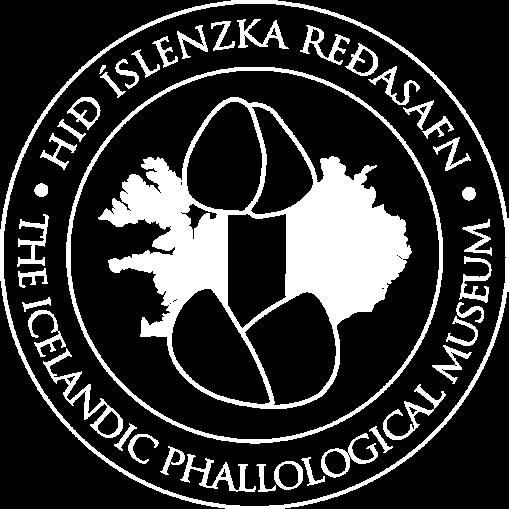
The only one of it’s kind in the world!
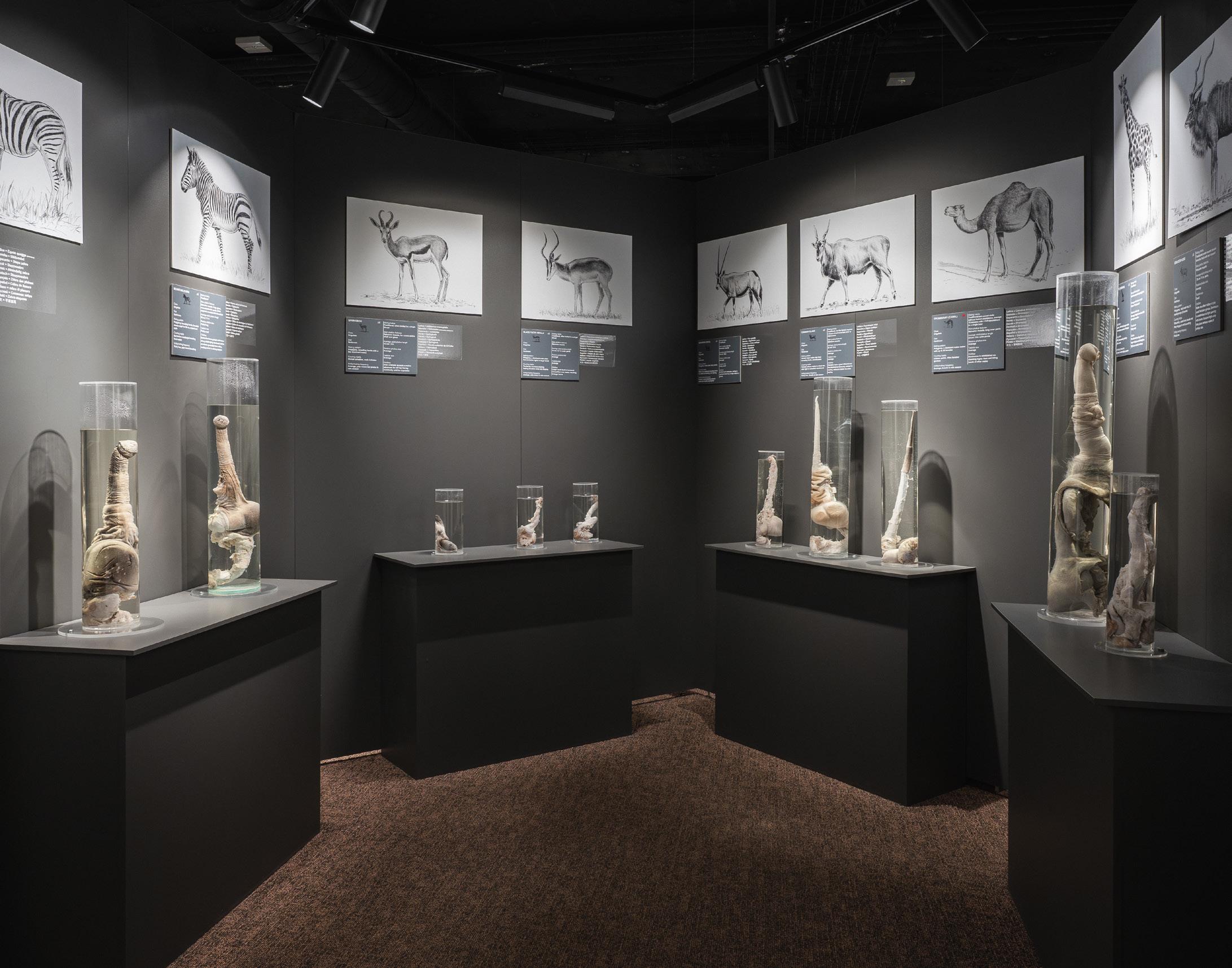
The Icelandic Phallological Museum is verified as having the world´s most extensive collection of biological penises. The collection includes every mammal of the Icelandic mammal fauna, including a human, but also over 100 foreign species, with many from Africa and North America.
Our largest penis is from an adult sperm whale, but our smallest is from a golden hamster. There is nothing pornographic in the museum; it only aims to inform and educate. Visitors engage in comparative anatomy, learn some unusual zoological facts, learn about the various aspects of phallic culture, and enjoy phallic-themed art. Our phallic bistro also offers a great selection of cuisine and drinks. It is, of course, penis-themed, including the waffles, cocktails, and beers. Our suppliers are mainly local small-batch companies; all food is cooked and prepared on-site.
The collection began as a joke in 1974 when our late founder, historian and teacher Sigurdur Hjartarson, who sadly passed away in 2023, worked as a school headmaster in Akranes, which had a booming whaling
industry at the time. During a night of drinking with his teachers, he lamented how food and materials from slaughtered animals were increasingly being wasted. Things were better back in the day when he, as a young boy, was given a bull penis pizzle (a small whip made from the dried sinews of a bull´s penis) to help with collecting sheep in the autumn season. Afterwards, the teachers decided to obtain a bull penis pizzle and present it to Sigurdur. This became an ongoing joke among his staff, and as some of them had summer jobs at the local
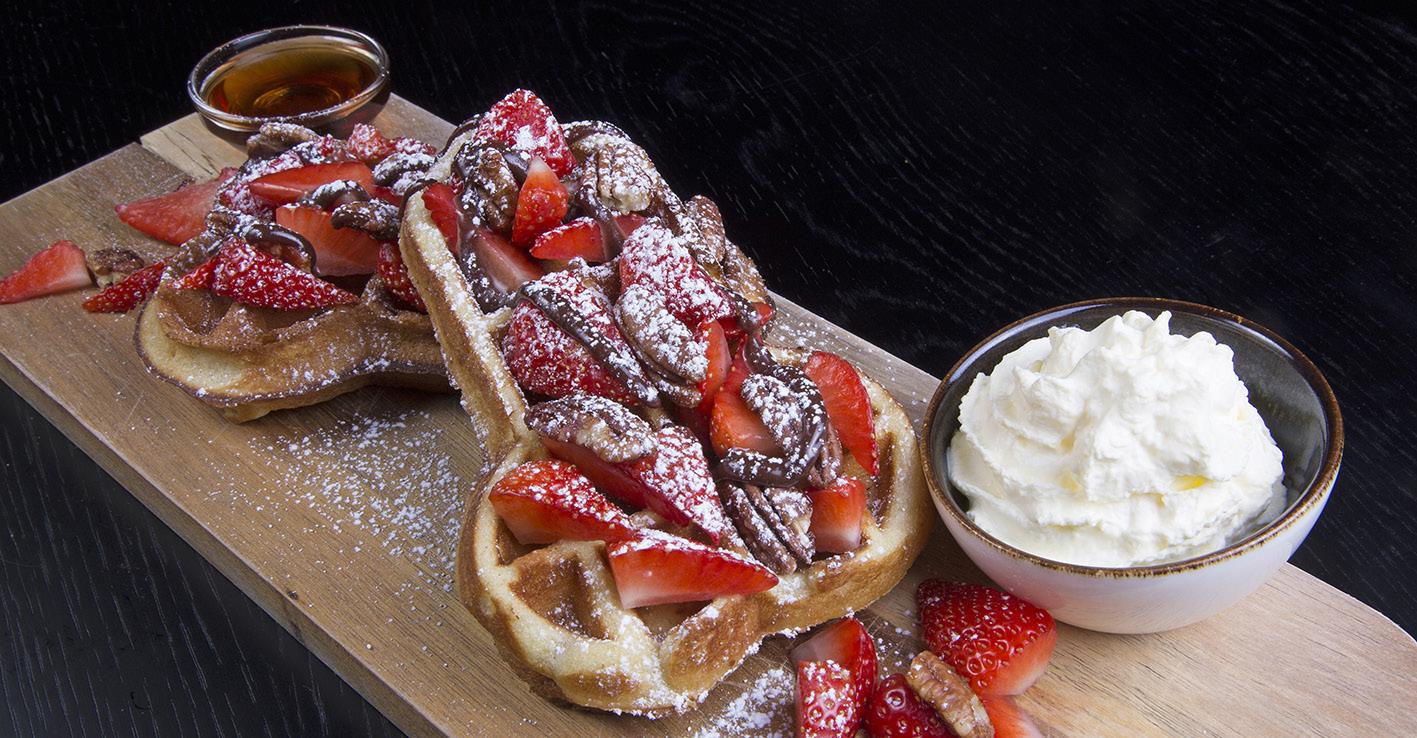


whaling station, they were able to procure many large penises.
Consequently, Sigurdur, rather than being the butt of a joke, decided to own it; he would collect the entire Icelandic mammal fauna. Eventually, with the family living room becoming increasingly crowded with amputated phalluses, his wife forbade him to keep them at the house anymore. As a result, he opened the museum in 1997 with 62 specimens.
In the spring of 2004, Sigurdur and his wife moved to the small fishing village of Húsavík, the whalewatching capital of Europe on the north coast, and of course, the museum moved with them. In Husavik, watching whale penises became as popular as watching whales.

In 2011, Sigurdur retired after completing the Icelandic mammal fauna when a local man, an infamous womaniser of sorts, donated his phallus post-mortem. Sigurdur´s son,
We have more than 500 real specimens on show from more than 150 species as well as art pieces from all over the world.
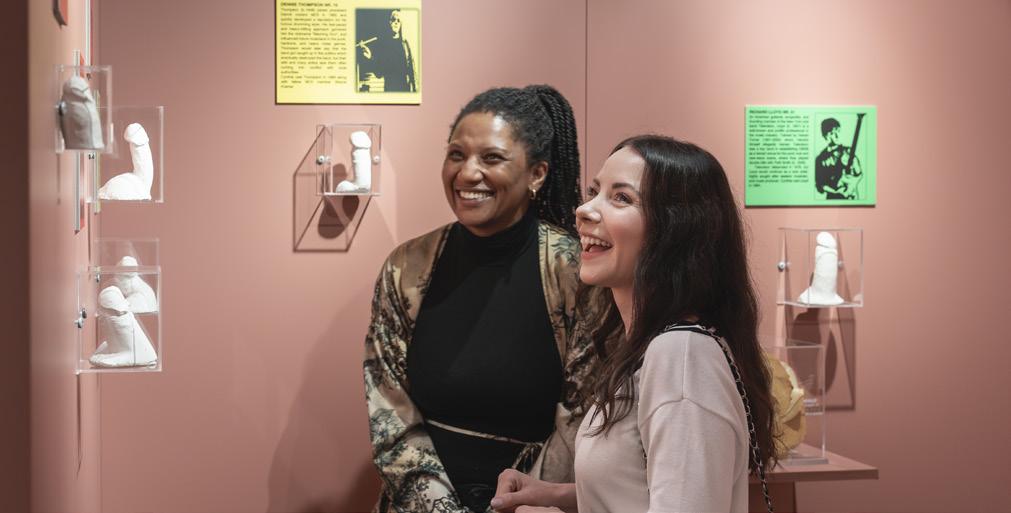
Hjörtur, moved the museum back to Reykjavik. Today, it is located in the heart of Reykjavik, directly by the old harbour.
As of 2024, the museum is the most visited in Iceland, and because of the ever-increasing number of phalluses and visitors, it has had to relocate thrice. It remains a family business, and as always, the collection keeps growing. It now includes a plaster cast of Jimi Hendrix´s phallus by the late artist Cynthia ´Plaster Caster´ Albritton and casts from 12 other rockstars.
T +3545616663 info@phallus.is www.phallus.is



FOR EXPERIENCING GREEN ENERGY PRODUCTION…
Geothermal Exhibition
FOR A SPELLBINDING ARRAY OF ICELANDIC ART…
The National Gallery of Iceland is an art museum in Reykjavik containing an impressive collection of the nation’s art through history. The gallery features notorious works of famous Icelandic artists and pieces that help explain the traditional national culture. The iconic gallery’s buildings house four exhibition halls on two floors.
FOR SMALL GROUP TOURS…
The guides at Your Friend in Reykjavik . are expert locals who really know the heart of Reykjavik and remain passionate about the customs, history, and cuisine of Iceland. On the Reykjavik day tours, these specialists love sharing their insider knowledge with guests and know how to entertain as well as educate. Through high-quality in-house training and a gift for weaving exciting stories, the tour guides really bring the culture of Iceland to life, helping you to discover a wide range of local tours.
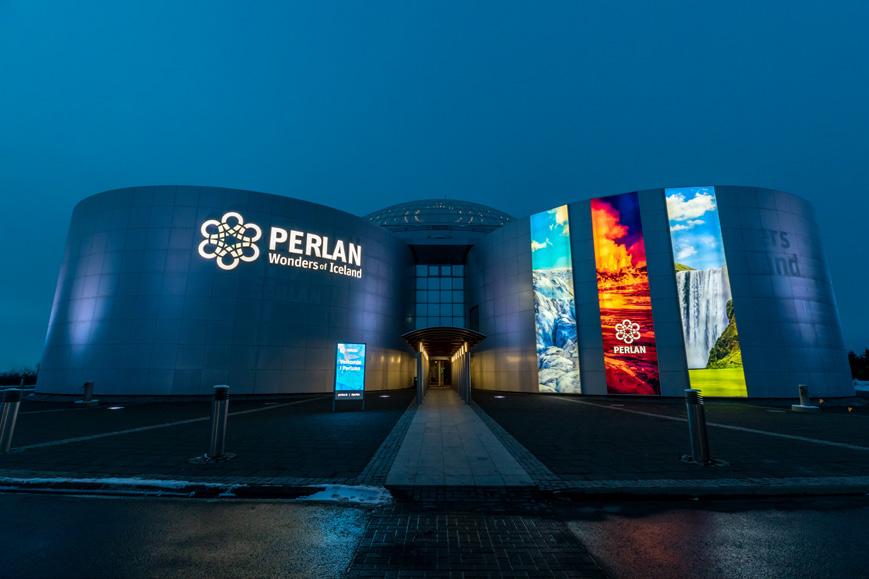
FOR THE WORLD’S ONLY GENUINE PENIS MUSEUM…
The Icelandic Phallological Museum is dedicated to collecting, studying, and presenting actual phalluses and all things phallic. With a broad range of artisan coffee, craft beer, and penis waffles, visitors can buy food and drinks at the museum’s phallicthemed bistro, The Phallic, which emphasises a cosy atmosphere and quality without being overpriced. Additionally, the gift shop has hundreds of penisthemed items, from memorabilia to board games and books to designer items; all visitors are sure to find something memorable.
The House of Collections Hverfisgata 15
National Gallery of Iceland Fríkirkjuvegur 7

Welcome to the National Gallery of Iceland, home to two museum sites — The National Gallery on Fríkirkjuvegur and the House of Collections on Hverfisgata — conveniently located within walking distance in the heart of downtown Reykjavík. The museums showcase an impressive collection of 19th and 20th-century artworks, as well as a series of contemporary art exhibitions.
Visitors can enjoy delicious refreshments at Café Kaktus Espressobar in the National Gallery and Café Siguranna at the House of Collections. Both museum stores offer a carefully curated selection of books and souvenirs inspired by works from the National Gallery's collection.

Hallgrímskirkja Church is undoubtedly the most distinctive building in Reykjavik and dominates the city’s historic centre. Today, the church and its tower are among the main landmarks of Reykjavik, attracting hundreds of thousands of visitors. Hallgrímskirkja Church is particularly popular during the Christmas period and hosts annual summer organ concerts in which soloists from around the globe perform weekly, pushing the majestic church organ – the largest in the country –to its limits.
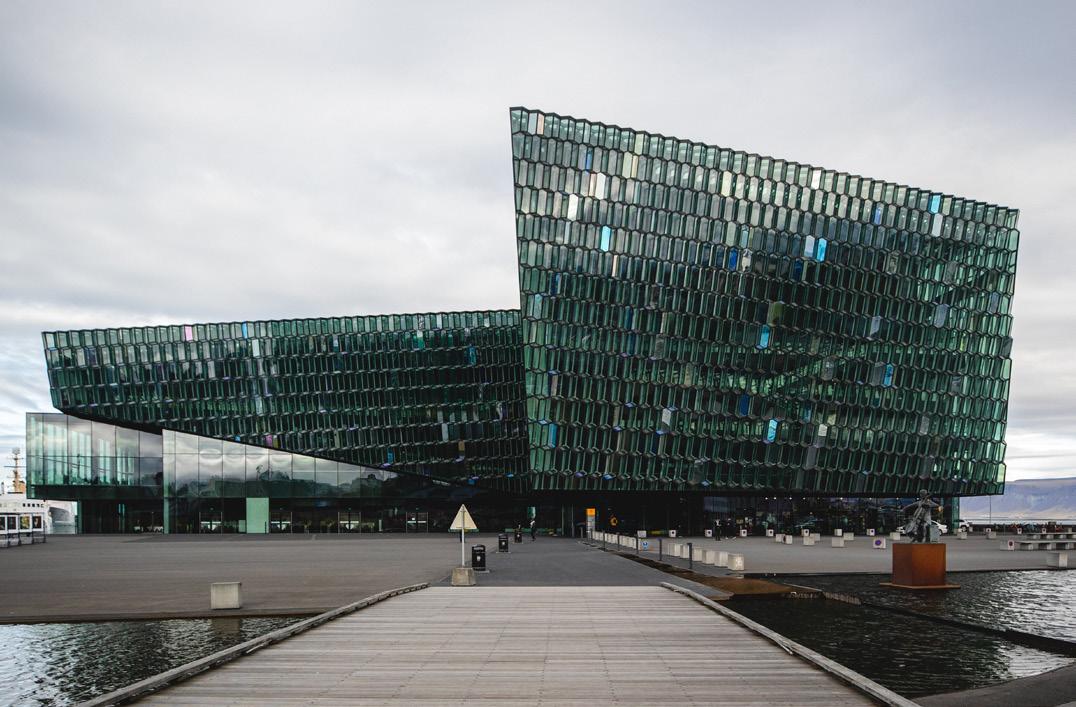
The historical centre of Hafnarfjörður, located in the southernmost part of the capital, is an enchanting destination that showcases the small-town charm prevalent in many Icelandic locations, with features like colourful timber houses clad in corrugated iron. Originally a bustling trading post and fishing harbour, Hafnarfjörður was built on a lava field, giving the historic town centre its unique character. Adding to the town’s appeal is the annual Christmas market and the Heart of Hafnarfjörður summer music festival.

Harpa Concert Hall, a symbol of the city’s vibrant cultural scene, is one of Reykjavik’s most iconic landmarks, known for its striking modern architecture. Its most distinctive feature, a coloured glass façade, was created using a 12-sided polyhedron with rhomboidal and hexagonal faces, symbolising Icelandic basalt structures. “The Harp” is home to the Icelandic Symphonic Orchestra and hosts a wide range of events, including concerts, conferences, meetings, plays, and public events.
Visit Iceland’s largest geothermal power plant
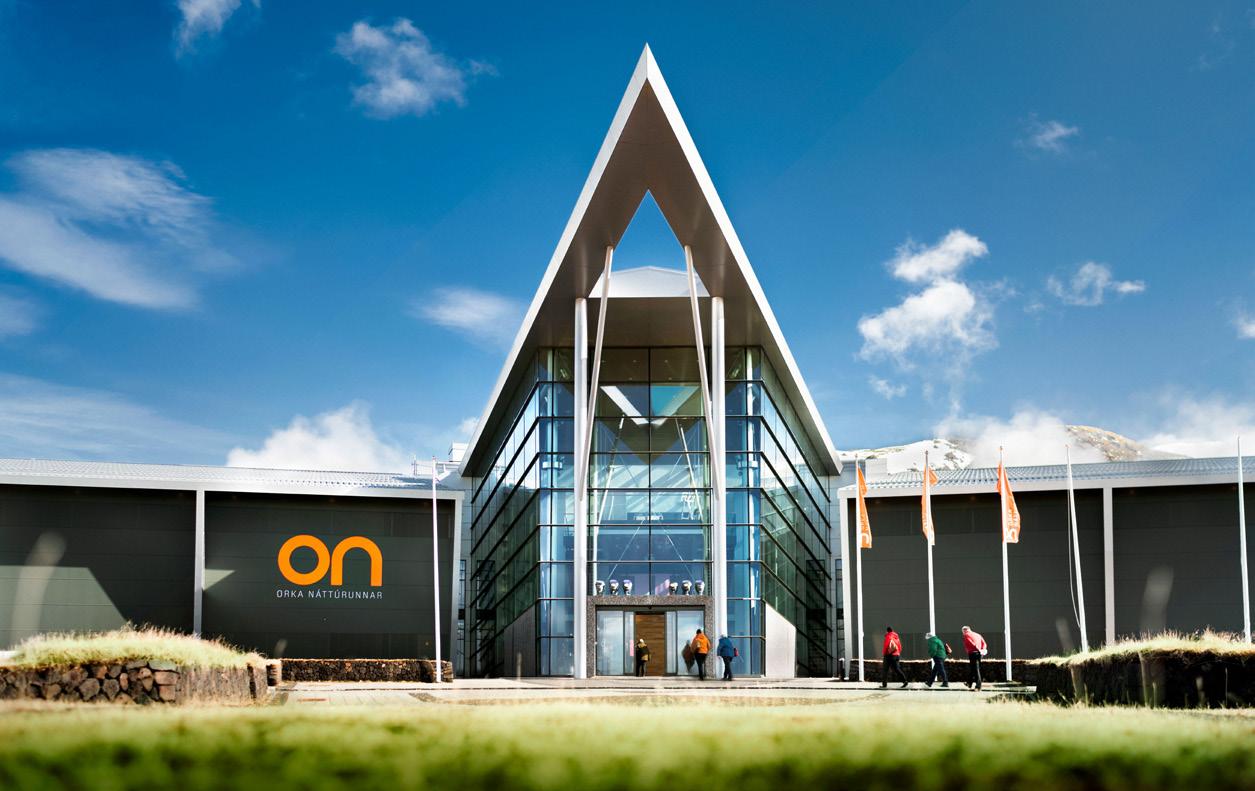

25km from Reykjavík, the Geothermal Exhibition at the
Power Plant is the perfect addition to your Golden Circle or South Coast tour. Nestled in the mountains, this unique experience offers an exclusive look into an operational geothermal power plant. Learn how ON Power works with geothermal production and distribution through engaging and interactive displays. Discover Iceland’s unique geology that makes this renewable energy source possible. Explore exciting innovation projects happening in and around the plant, including Carbfix – where CO₂ is turned into stone!

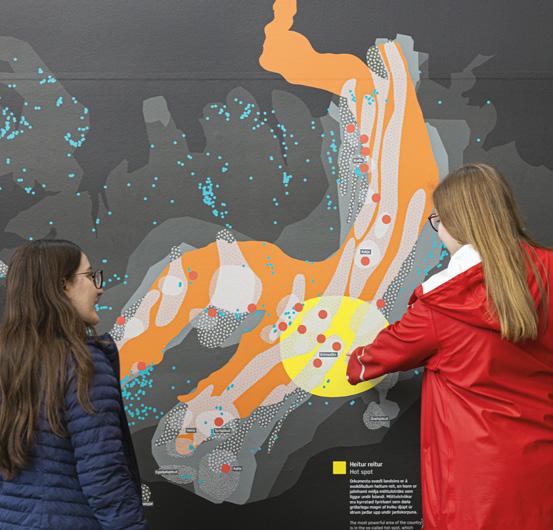

Our friendly Science Communicators are ready to answer any questions you have during your visit. Enjoy breathtaking views of moss-covered lava fields, and relax in our café before or during your visit. You can also charge your car, refill your water bottle, and explore nearby hiking trails. Make the Geothermal Exhibition a memorable stop on your Icelandic adventure!
Phone: +354 591 2880 | syning@or.is www.geothermalexhibition.com
THERE ARE SEVERAL ways to get to Reykjavik, including flights from over 50 gateways in Europe and North America to Keflavík Airport.
From there, you can use scheduled coach transfers, private taxis, rental cars, or public buses to get to the city centre.
Icelandair is the country’s leading airline, offering safe and reliable flights with exceptional service to metropolitan areas.
Travellers visiting Reykjavik can choose from several options when it comes to getting around the city. Many people choose to rent a car,

but public transportation is both more economical and eco-friendly. Elsewhere, bike and electric scooter rentals have also become very popular, and there is also always the option of exploring on foot.
Alternatively, you can embrace travel like a local with Hopp, Iceland’s premier transportation app. Whether you need an e-scooter to explore sights, a taxi for the 50km drive between Keflavík Airport and Reykjavik, or even a car to take a short road trip, Hopp has got your every transport need covered!
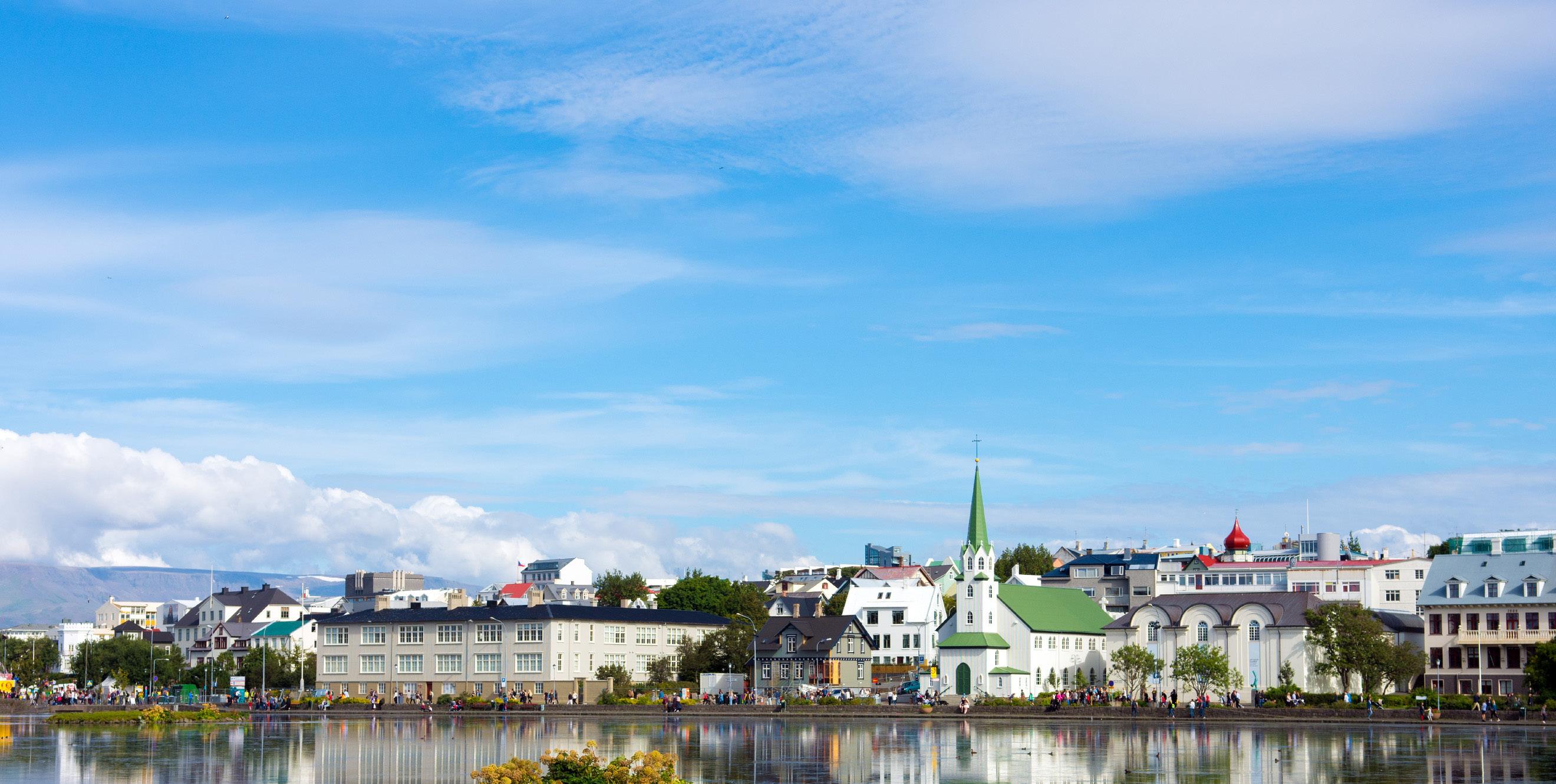



www.outlooktravelmag.com